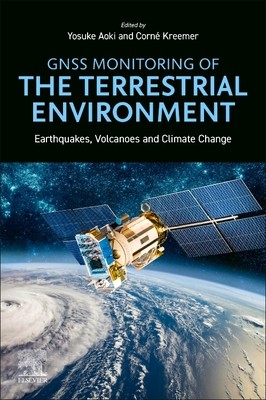
- We will send in 10–14 business days.
- Publisher: Elsevier
- ISBN-10: 032395507X
- ISBN-13: 9780323955072
- Format: 21.4 x 27.6 x 1.8 cm, softcover
- Language: English
- SAVE -10% with code: EXTRA
Gnss Monitoring of the Terrestrial Environment (e-book) (used book) | bookbook.eu
Reviews
Description
GNSS Monitoring of the Terrestrial Environment: Earthquakes, Volcanoes, and Climate Change presents the application of GNSS technologies to natural hazards on Earth, as GNSS is one of the most powerful techniques that can be applied to monitoring and understanding earthquakes, volcanism, and climate change. The book details the background theory of the GNSS techniques discussed, as well as taking the reader through applications and implementation. Tables comparing GNSS with other geodetic techniques, such as SAR, VLBI, SLR, and conventional geodetic methods such as strainmeters, tiltmeters, and leveling surveys are also included. The book is divided into two parts, the first covering monitoring of earthquakes and volcanoes, and applications of GNSS signals to understanding earthquakes and volcanism, while the second part covers monitoring climate change with GNSS. The book concludes with a chapter bridging both parts, discussing the relationship between earthquakes and volcanism, and climate change.
GNSS Monitoring of the Terrestrial Environment: Earthquakes, Volcanoes, and Climate Change is a detailed background and technical guide on the theory and practical application of GNSS to earthquakes, volcanoes, and climate change. The book is aimed at academics, researchers and advanced students working in the fields of remote sensing technologies or natural hazards.
EXTRA 10 % discount with code: EXTRA
The promotion ends in 15d.20:12:16
The discount code is valid when purchasing from 10 €. Discounts do not stack.
- Publisher: Elsevier
- ISBN-10: 032395507X
- ISBN-13: 9780323955072
- Format: 21.4 x 27.6 x 1.8 cm, softcover
- Language: English English
GNSS Monitoring of the Terrestrial Environment: Earthquakes, Volcanoes, and Climate Change presents the application of GNSS technologies to natural hazards on Earth, as GNSS is one of the most powerful techniques that can be applied to monitoring and understanding earthquakes, volcanism, and climate change. The book details the background theory of the GNSS techniques discussed, as well as taking the reader through applications and implementation. Tables comparing GNSS with other geodetic techniques, such as SAR, VLBI, SLR, and conventional geodetic methods such as strainmeters, tiltmeters, and leveling surveys are also included. The book is divided into two parts, the first covering monitoring of earthquakes and volcanoes, and applications of GNSS signals to understanding earthquakes and volcanism, while the second part covers monitoring climate change with GNSS. The book concludes with a chapter bridging both parts, discussing the relationship between earthquakes and volcanism, and climate change.
GNSS Monitoring of the Terrestrial Environment: Earthquakes, Volcanoes, and Climate Change is a detailed background and technical guide on the theory and practical application of GNSS to earthquakes, volcanoes, and climate change. The book is aimed at academics, researchers and advanced students working in the fields of remote sensing technologies or natural hazards.


Reviews